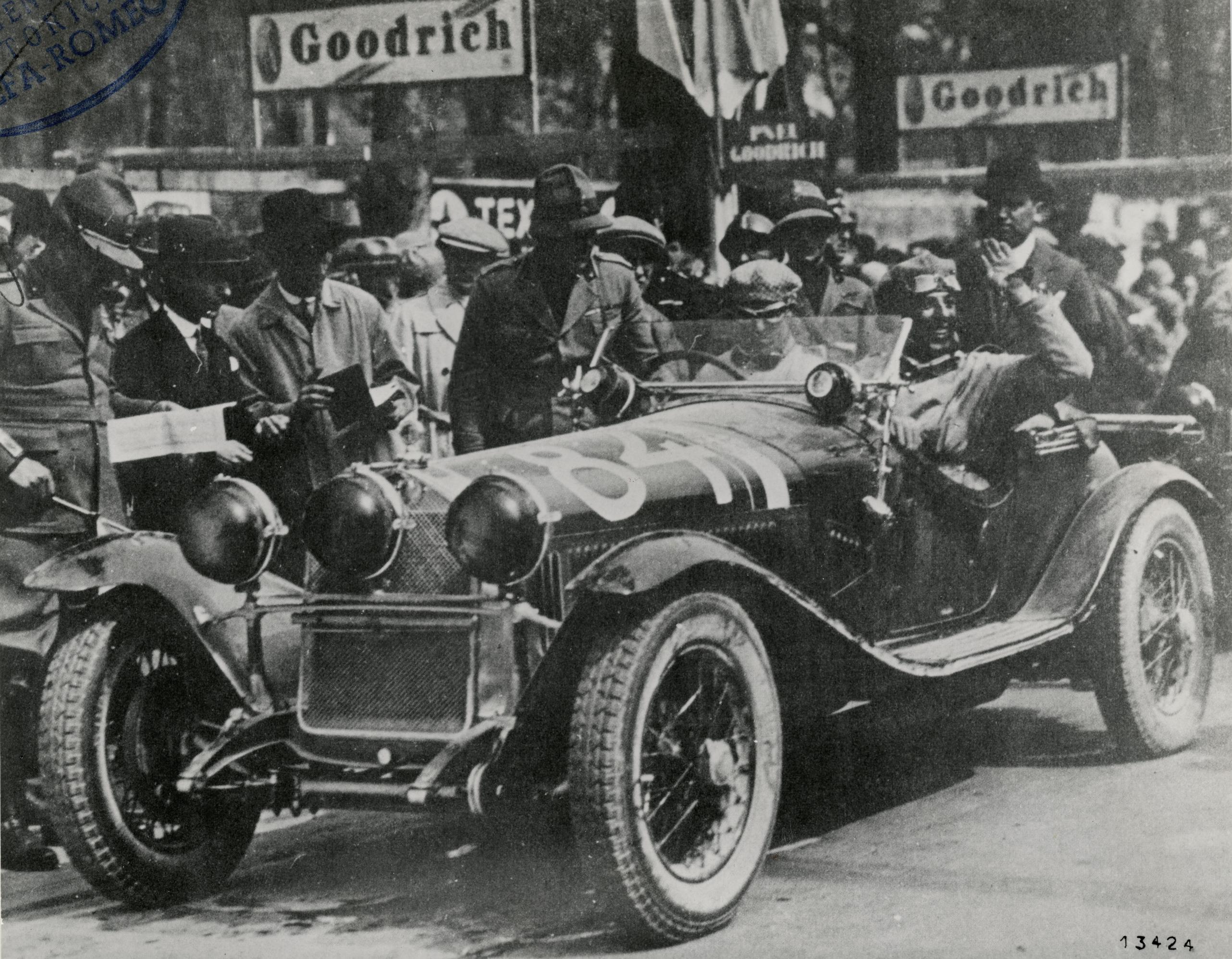
- The 35th historic re-enactment of the most famous road race of all time will take place from May 18 to 21, 2017
- The Alfa Romeo Historic Museum will be sending three of its crown jewels: the 6C 1750 Gran Sport (1930), the 6C 2300 Mille Miglia (1938) and the 1900 Super Sprint (1955).
- They will be joined on the start line by a Lancia Aprilia (1937) and a Lancia Aurelia B24 (1955).
The historical re-enactment of the Mille Miglia – the race famously defined by Enzo Ferrari as “the most beautiful travelling museum in the world” – will be held from 18 to 21 May. Now in its 35th year, the event will welcome several rare classic Alfa Romeo and Lancia cars from the FCA Heritage collection. In line with tradition, this classic race – of which Alfa Romeo is the automotive sponsor for the third year running – will start and end in Brescia, having crossed some of the most striking locations in Italy, with the turning point in Rome.
Three superb cars from the Alfa Romeo Museum, the 6C 1750 Gran Sport (1930), the 6C 2300 Mille Miglia (1938) and the 1900 Super Sprint (1956), will be travelling the roads where the Mille Miglia was staged from 1927 to 1957. The race was won by Alfa Romeo no less than eleven times: a record that can never be beaten.
These rare classic cars will be flanked by the latest additions to the Alfa Romeo line-up, the Stelvio, the first SUV in the history of brand, and the Giulia, the sporty saloon that represents the new paradigm of the brand. Not by chance, these new cars embody all the elements that historically made Alfa Romeo one of the most desirable brands: quintessentially Italian design, high-performance engines, perfect weight distribution, unique engineering solutions and the Giulia also offers the best power-to-weight ratio in its category.
Alfa Romeo
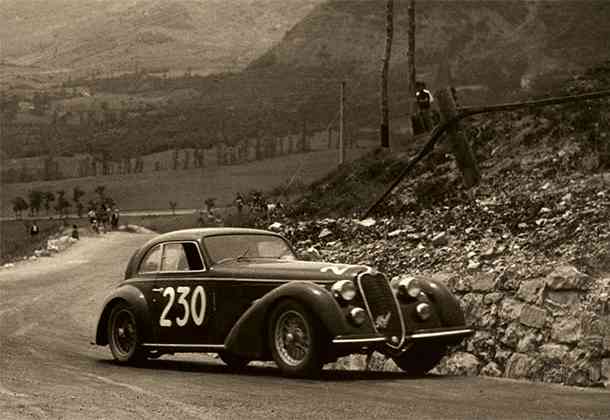 In December 1926, a group affectionately nicknamed the “Four Musketeers”—consisting of Giovanni Canestrini, a journalist with the Gazzetta dello Sport, Renzo Castagneto, secretary of the Brescia branch of the Regio Automobil Club, and enthusiastic patrons Aymo Maggi and Franco Marzotti—created a car race from Brescia to Rome and back.
In December 1926, a group affectionately nicknamed the “Four Musketeers”—consisting of Giovanni Canestrini, a journalist with the Gazzetta dello Sport, Renzo Castagneto, secretary of the Brescia branch of the Regio Automobil Club, and enthusiastic patrons Aymo Maggi and Franco Marzotti—created a car race from Brescia to Rome and back.
The route was 1600 kilometres long, which Marzotti, who had recently returned from a trip to the United States, realised corresponded to 1000 miles. Thus the Coppa delle Mille Miglia (Thousand-Mile Cup) was born.
It was an instant success: within three editions Tazio Nuvolari and Eugenio Castellotti became the first to exceed an average speed of 100 km/h in the legendary 1930 contest, on board an Alfa Romeo 6C 1750 SS. That record was set during a golden age of absolute domination by Alfa Romeo and its courageous and equally daring drivers, who besides Nuvolari included Achille Varzi, Giuseppe Campari, Carlo Maria Pintacuda and Clemente Biondetti among the more famous names. A serious accident in 1938 caused the government to temporarily ban road racing, causing the cancellation of the 1939 edition. Nevertheless, the organisers did not lose heart and reinvented the race in the form of a circuit between Brescia, Cremona and Mantua, which was lapped nine times and called the Brescia Grand Prix of the Mille Miglia.
The competition was suspended for a second time due to the war, before resuming in 1947 under difficult circumstances, with bridges destroyed, roads torn up, fuel and tyres rationed and a car industry that was struggling to get back on its feet. The three editions from 1947 to 1949 were as difficult to organise as they were exhilarating to compete in.
The eight editions of the modern era, from 1950 to 1957 saw the emergence of official teams from all over the world, as well as professional drivers. The event took on such international importance that it contributed significantly to the reconstruction of Italy’s road network and the development of the automotive sector, becoming a driver of the country’s recovery in the immediate post-war period and beyond.
In the 1956 edition, Stirling Moss set a new average speed record of 157,65 km/h, but the race had become so dangerous that after two fatal crashes in 1957, all motor racing on public roads was banned. Refusing to admit defeat, the organisation doggedly created a formula that is still adopted for rally racing: long highway sections at legal speeds interspersed with special stages involving speed trials on purpose-built tracks or hillclimbs on private roads. The three editions of 1958, 1959 and 1961 followed this formula, which was no longer based on pure speed and ultimately proved unsuccessful.
The race was discontinued until 1968 when Alfa Romeo marked the launch of its new 1750 model, in honour of the legendary vehicle that Nuvolari drove to victory in 1930, by organising a re-enactment tour for a number of historic cars, followed by journalists on board new 1750s. This event was the precursor of modern editions.
Subsequently in 1982, the Mille Miglia was revived as a historic re-enactment, initially on a biennial basis, and has since become a race run on public roads at legal speeds that is only open to cars involved in the 1927-1957 editions. The Mille Miglia has taken place every year since 1987 and attracts collectors and public figures from around the world, even beyond the automotive sector. But the cars are the real protagonists, because they have written the story of the Mille Miglia.
Although the inaugural edition in 1927 was won by an O.M. car, Alfa Romeo triumphed in almost half of the 24 Mille Miglia races staged from 1927 to 1957, accumulating no fewer than 11 victories. Ferrari dominated from 1948 with eight victories, including a series of six straight successes that was interrupted only by Alberto Ascari’s 1954 victory in a Lancia D24 Spider.
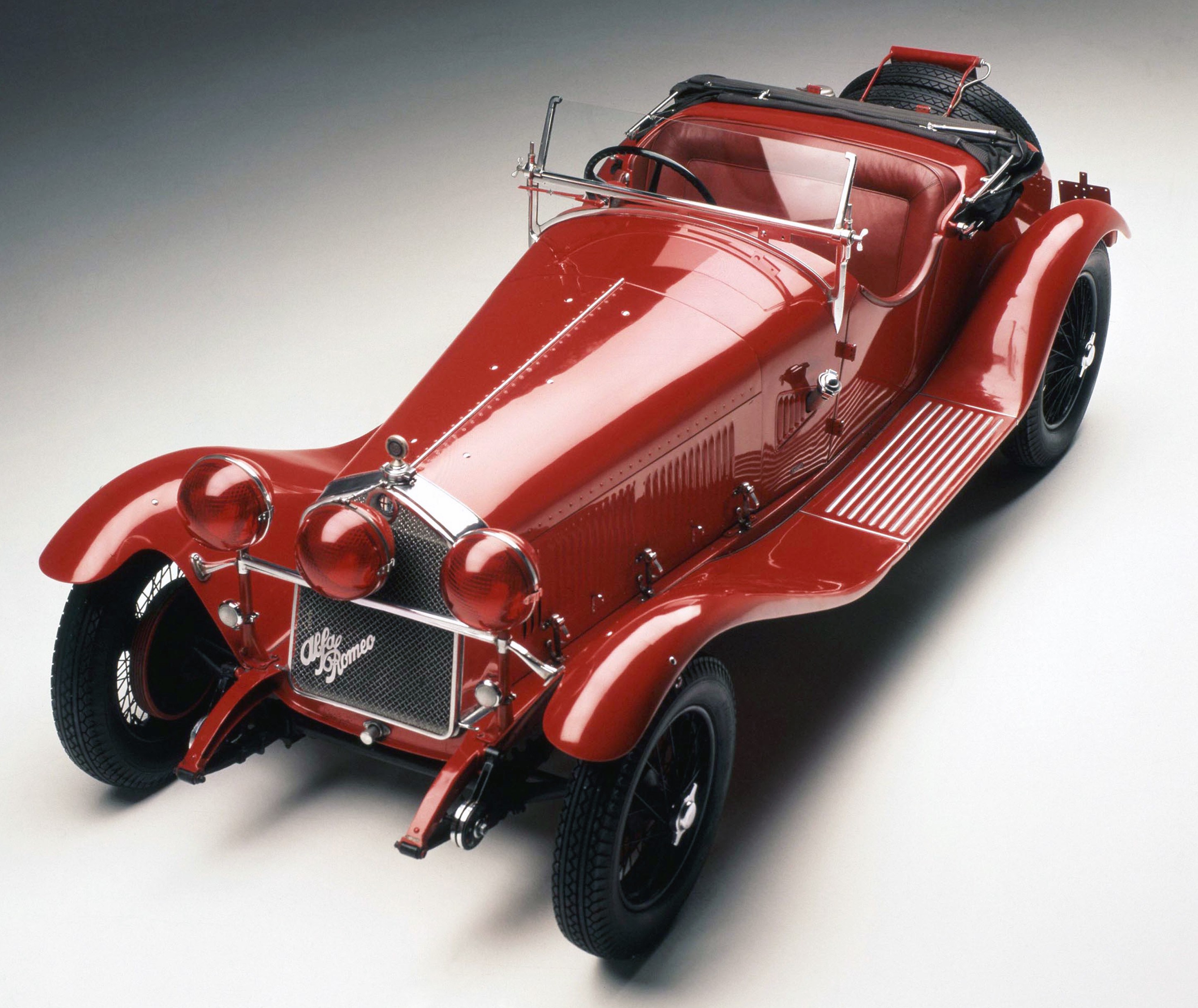
6C 1750 Gran Sport (1930)
All eyes will be on the 6C 1750 Gran Sport, the legendary model in which Tazio Nuvolari and Giovanni Battista Guidotti won the Brescia-based race in 1930. That was the race of the legendary “overtaking in the dark” episode, when Nuvolari achieved the unprecedented feat of averaging 100km/h over the entire course. The bodywork was created by Milan atelier Zagato, and still draws gasps of admiration from those lucky enough to see it today.
The great responsibility of driving his truly iconic sports car is entrusted to Sicilian Giovanni Moceri, an experienced regularity rally driver and winner of the last two editions of the Targa Florio Classic. The 1750 is a genuine icon of the Mille Miglia, because it arguably encapsulates the history of the race more than any other car.
Its heyday was during the so-called epic period of the Coppa delle Mille Miglia, when Alfa Romeo dominated the event with ace drivers such as Giuseppe Campari, Tazio Nuvolari, Achille Varzi, Baconin Borzacchini, Carlo Felice Trossi, Carlo Maria Pintacuda and Clemente Biondetti.
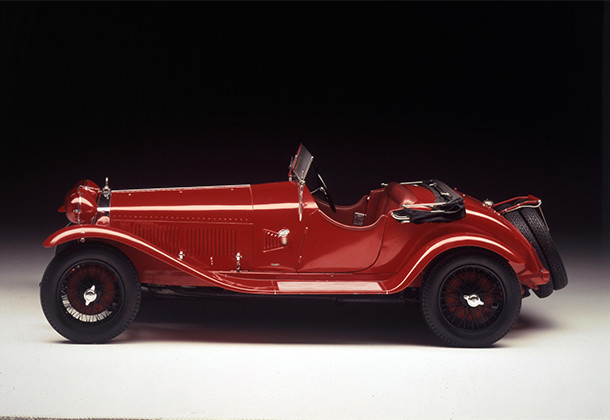 Zagato, produced various sport spiders based on the 6C 1750 chassis. The engine, designed by Vittorio Jano and derived from the earlier 6C 1500’s engine, is an inline six-cylinder twin-cam of 1.752 cc driven by a Roots-type supercharger. Initially the inline-six developed 85 HP, which increased to 102 HP in the so-called fixed head version. This 1750 weighs 840 kg, and reaches a top speed of 170 km/h.
Zagato, produced various sport spiders based on the 6C 1750 chassis. The engine, designed by Vittorio Jano and derived from the earlier 6C 1500’s engine, is an inline six-cylinder twin-cam of 1.752 cc driven by a Roots-type supercharger. Initially the inline-six developed 85 HP, which increased to 102 HP in the so-called fixed head version. This 1750 weighs 840 kg, and reaches a top speed of 170 km/h.
A total of 213 examples of the 4th/5th series Gran Sport were produced between 1930 and 1932, including only six fixed head versions.
The 1930 edition was notable for the victory of Nuvolari and Guidotti who set a new record by covering the 1600-kilometre race at an average speed exceeding 100 km/h (100.430 km/h to be precise). Alfa Romeos occupied the first four places, with Nuvolari and Guidotti ranked immediately above Varzi/Canavesi, Campari/Marinoni and Ghersi/Cortese respectively. Not far behind, another four Alfa cars (6C 1750 GS) occupied the eighth to eleventh places.
But besides the records and impressive statistics, the winning pair entered into legend or Guidotti’s account of how he and Nuvolari overtook Achille Varzi just before the finish with their headlights switched off to surprise their rival. Was it fact or fiction? Nuvolari never denied it, although the first light of dawn may have helped him perform the manoeuvre.
6C 2300 Coupé Mille Miglia (1938)
The 6C 2300 Coupé Mille Miglia, with body made by Touring, will be on the start platform in Viale Venezia. The name “Mille Miglia” pays homage to the excellent performance of the 6C 2300 Pescara in 1937, on which it was based: finishing first in its category and fourth in the general ranking. Under the bonnet is a 2,309cm3 straight-six capable of delivering 95hp at 4,500rpm and propelling the vehicle to 170km/h. The car will be driven by a crew of excellence: Arturo Merzario and Jean-Pierre Jarier. The competitive duo represents the glorious history of Alfa Romeo in motorsports. They took the sport prototypes world championship in 1977, winning all the races on the calendar in their category in an Alfa Romeo 33 SC 12.
The 90th anniversary edition of the Mille Miglia (1927-2017) will feature the Alfa Romeo 6C 2300 Mille Miglia, which belongs to the FCA Heritage collection and is exhibited during the year at the Alfa Romeo Historical Museum. It will be driven by a pair of famous drivers in Arturo Merzario and Jean-Pierre Jarier.
Both have Formula One experience and previously formed a winning partnership in the 1977 World Sportscar Championship, which Alfa Romeo won hands-down thanks to the mythical 33 SC 12, which was victorious in every race that season.
Now, after 40 years, the two aces will team up once again in a winning Alfa Romeo, with the delicate task of driving a car that has made motoring history and competed in numerous editions of the Mille Miglia.
The Alfa Romeo 6C 2300 is a milestone in motoring history, being one of the first European cars to adopt independent suspension. The 2309 cm3 six-cylinder engine, which delivers 95 HP at 4500 rpm in this version, consists of a cast iron monoblock, light alloy cylinder head and overhead V valves with overhead camshafts controlled by chains and gears. The gearbox has four speeds, plus reverse, with the shift lever on the centre console. The drum brakes on all four wheels are hydraulically controlled. The front suspension is independent, with transverse link and helical springs; while the rear suspension is also independent and consists of an oblique link, transverse connecting rod and longitudinal torsion bar. A weight of 1380 kg allows this 6C 2300 to reach a remarkable top speed of 170 km/h.
Only 107 examples of the 6C 2300 Mille Miglia were produced between 1938 and 1939, one of them in a spider version.
The Alfa 6C 2300 played a commanding role in the Mille Miglia between 1935 and 1938. It took first place in its class and fourth position overall in 1937 with Boratto/Guidotti in the cockpit, followed immediately in second place and sixth overall by the pairing of Cortese/Guatta. Another class victory and ninth place overall went to Cattaneo/Donati in1936 before Cortese/Fumagalli won their class and finished ninth overall in 1938.

1900 Super Sprint (1956)
According to the consolidated 1900 family tradition, the Sprint was replaced by the Super Sprint in 1955: it was similar to the previous model but with a new snappier five-speed gearbox. It had the same mechanics as the Berlina T. I. Super, namely 1,975cm3 displacement, double-barrel inverted carburettor and double rear CV joint. The second version which competed in the Mille Miglia delivered 115hp at 5,500rpm and reached a remarkable top speed of 190km/h.
In 1954, in order to honour its advertising claim that the 1900 was a “family car that wins races” and obtain a more powerful engine, Alfa Romeo increased the piston bore by 2 mm, thereby expanding the displacement from 1884 cm3 to 1.975 cm3 and upgrading the car’s performance.
These new versions were differentiated by adding the word “Super” to the designation. Hence, the various models became the 1900 Super, the 1900 Super TI and the 1900 Super Sprint coupé. The power output was 90 HP for the saloons and 115 HP for the coupés, which were also equipped with a 5-speed gearbox.
From 1956 onwards, the Touring-bodied “second series” coupés featured a shift lever on the centre console instead of on the steering wheel, although some first series models already had a similar configuration. A total of 599 examples were produced from 1955 to 1958.
In the Mille Miglia of the 1950s, many private drivers chose the “Millenove”, mainly the saloon and TI versions, to participate in the crowded Touring class, whereas the 1900 Super Sprint competed in the Gran Touring category.
The 1900 was considered by gentleman drivers and private teams to be a highly effective class-winning car due to its road holding, speed and reliability.
Lancia
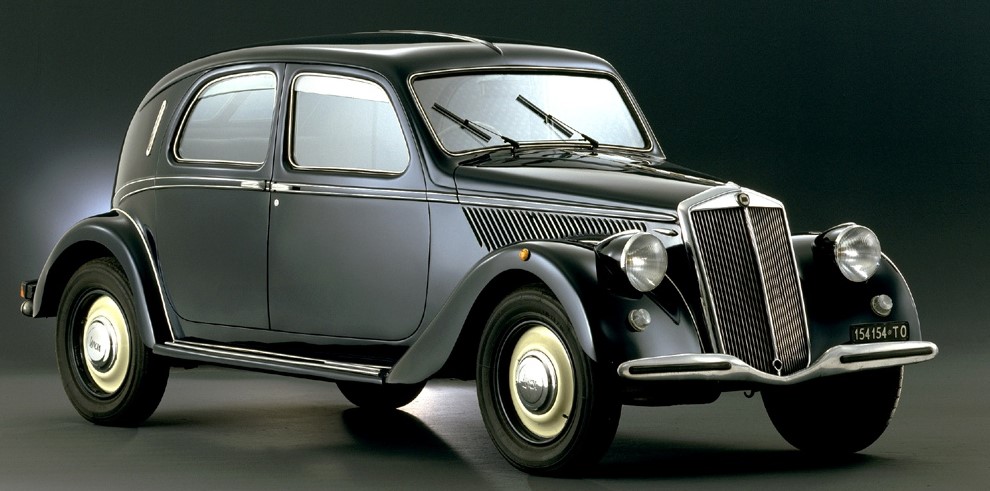
Aprilia (1937)
The Aprilia, introduced in 1936, was the spiritual legacy of Vincenzo Lancia, who had passed away a few months before the commercial launch of the car. Provided with a unitised body integrated with the chassis without B-pillar, the appearance of the car was truly innovative. It stood out among the sedans of its day for its particularly aerodynamic line and light-weight, securing a top speed of about 130km/h and good fuel efficiency at the same time. The narrow-V4 with hemispherical combustion chambers contributed to this result. In addition to telescopic independent front suspensions, by now standard on Lancias, the car fitted independent suspensions on the rear axle.
The history of the Lancia Aprilia is intriguing, because the car is regarded as the spiritual testament of the marque’s founderVincenzo Lancia, who died in 1936 just before its official presentation. The Aprilia is a technological marvel delivering high performance, excellent pick-up and outstanding road holding, characteristics that made this sports car almost unbeatablewhen racing in the Touring sub-1500 cc class.
Its sophisticated mechanics are based on a 48 HP four-cylinder narrow-angle V engine of 1.353 cm3 with hemispherical combustion chambers, overhead camshaft, light-alloy monoblock and cast iron liners. Its self-supporting bodywork and independent four-wheel suspension were highly refined and innovative features in its day.
The contours were particularly modern and the car’s unladen weight of 850 kg, allowed it to quickly reach a remarkable top speed of 125 km/h.
The Aprilia was an instant success and 10,354 examples of the 238 and 238L (Luxury) models were produced between 1937 and 1939. A further 4350 chassis of the Aprilia first series (239 model) were produced for coach-built bodies.
The car first entered the Mille Miglia in 1938 and achieved its first significant result in 1940 when Bassi/Furielli finished 27th overall and third in class. But the Lancia Aprilia’s biggest achievement came in 1947 when the pairing of Tullini/Rossi won the TI sub-1500 cc class ahead of two other Aprilias driven by Piccinini/Marsaglia and Rollino/Poggio. That was during the post-war reconstruction years, when fuel and tyres were still rationed and the competitions were extremely difficult to organise.
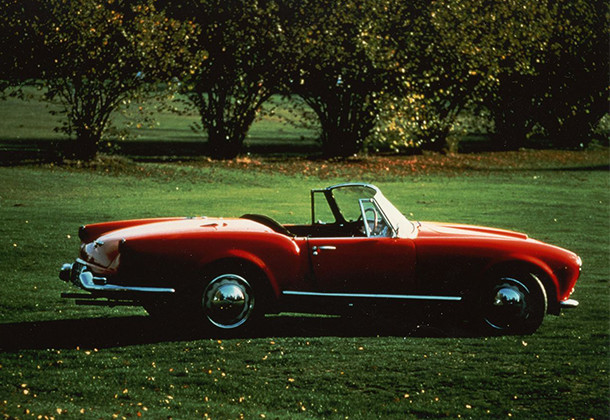
Lancia Aurelia B24 Spider (1955)
Designed by Pinin Farina and considered by many to be the most beautiful spider in the world , the B24 was presented at the Brussels Motor Show on January 15, 1955. Two-hundred and forty units were made, with production ending in October 1955. The car had distinctive design details, such as the “wing-shaped” bumpers, doors without handles and panoramic windows and windscreen with American-style retracted pillars. The engine was the legendary V6 designed by Francesco De Virgilio. It had a displacement of 2451cm3 and developed 118hp, driving it to a top speed of 180km/h. The later “Convertible America” version, which debuted at the Turin Motor Show in January 1956, appeared much more classic and comfortable: the engine was slightly less powerful and the doors were fitted with handles and winding windows. The production continued until the end of 1958. The Aurelia will be driven by Helio Ascari, descendant of the legendary Alberto who triumphed at the Mille Miglia in 1954 behind the wheel of the Lancia D24.
The crew consists of Vogue editor Carlo Ducci and Helio Ascari, a refined New York artisan who produces bespoke bicycles inspired by vintage cars, and whose surname hints at his lineage to the great driver Alberto Ascari. Just as stylish is their historic car, the B24, which a young Gianni Lancia created as a spider version of the Aurelia B20, and whose equally elegant shape made it hugely successful in the American market. By shortening the frame of the B20 4a series and with a few modifications to its 6-cylinder 2.451 cm3 engine, which were needed to fit it into a much lower bonnet, one of the most beautiful spiders of all time was born.
The first series was the only B24 that participated in the Mille Miglia and two versions were built: the Spider sometimes called the “America”, with canvas folding top, and the Convertibile with rigid roof. A total of 240 cars: were made: 59 with right-hand drive and 181 with left-hand drive.
The first series sported a panoramic windscreen (the biggest concession to American tastes), a long bonnet scoop and dual split bumperettes that accentuate the classic Lancia shield grille. The shape is very original: the centrally positioned cockpitand extended boot line are perhaps its most intriguing characteristics. The 118 HP engine, which was tuned down to 108-110 HP for the American market, delivered a top speed of 180 km/h (174 km/h for the America version). The gorgeous Turin-built spider was designed by the Pininfarina studio and equipped with rear wheel drive and a four-speed gearbox.
The first Mille Miglia race to feature an Aurelia B24 spider was the1956 edition, when the car driven by Bernardo Ferrari and bearing the number 506 failed to finish. The model achieved a much better result the following year, at the last edition of the Mille Miglia in 1957: Guido Mario Terzi finished 19th overall and, more importantly, came 7th in the Grand Touring +2000 class. It was a tremendous achievement, considering that the six GTs that finished ahead of the B24 were Ferrari 250s with 3000 cm3 engines. Ranked seventh in its class, the Aurelia B24 Spider beat another three Ferrari and a Ford Thunderbird, while in the overall ranking, it outperformed the BMW 502, Alfa Romeo 1900 SS, Fiat 8V Zagato, Triumph, numerous Porsches and a complete lineup of agile Alfa Romeo Giulietta Sprint Veloce models.
Mille Miglia cars are eminently charming and always excite great interest among the enthusiastic spectators, but the Aurelia B24 Spider in particular is certain to turn heads again when it glides past the crowds.

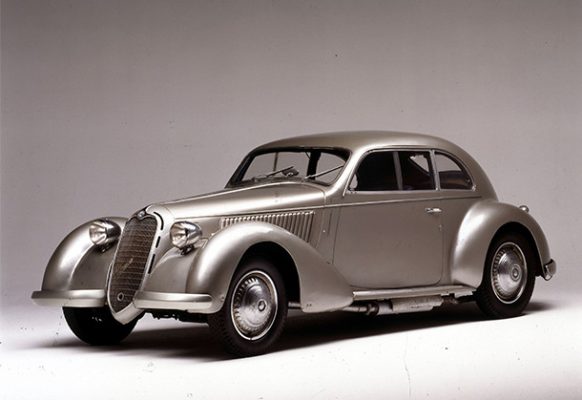
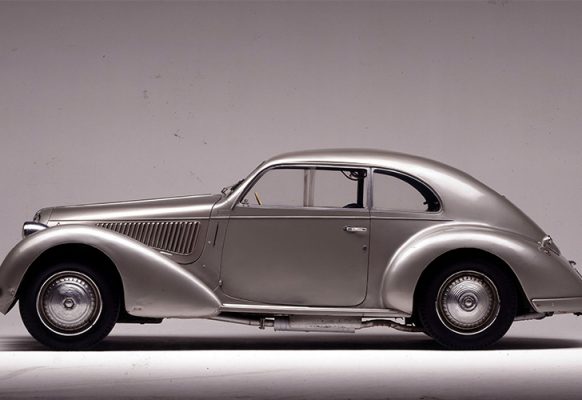
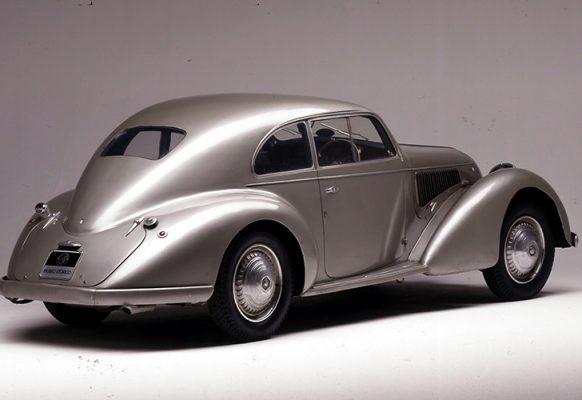
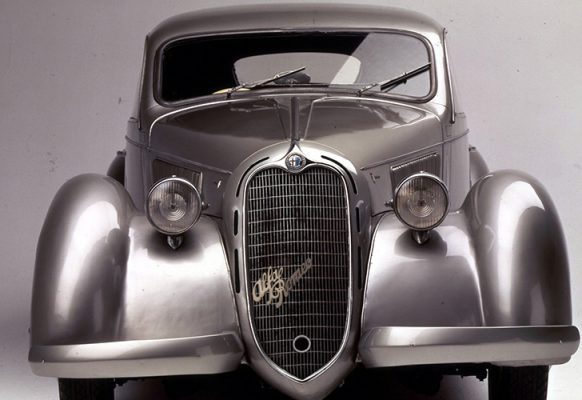
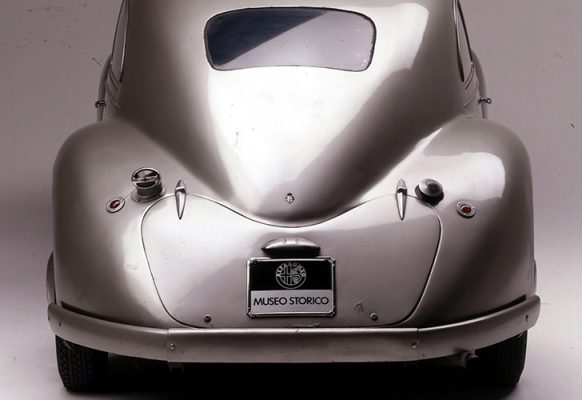
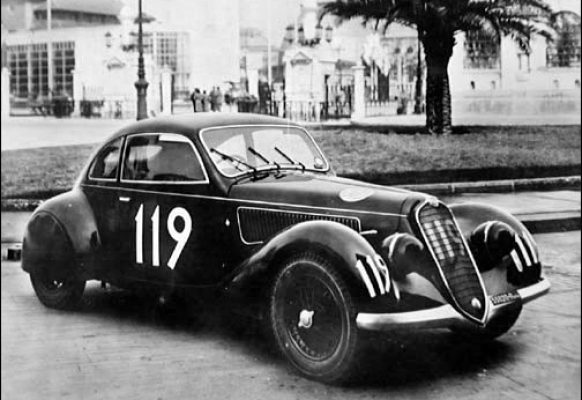
You must be logged in to post a comment.